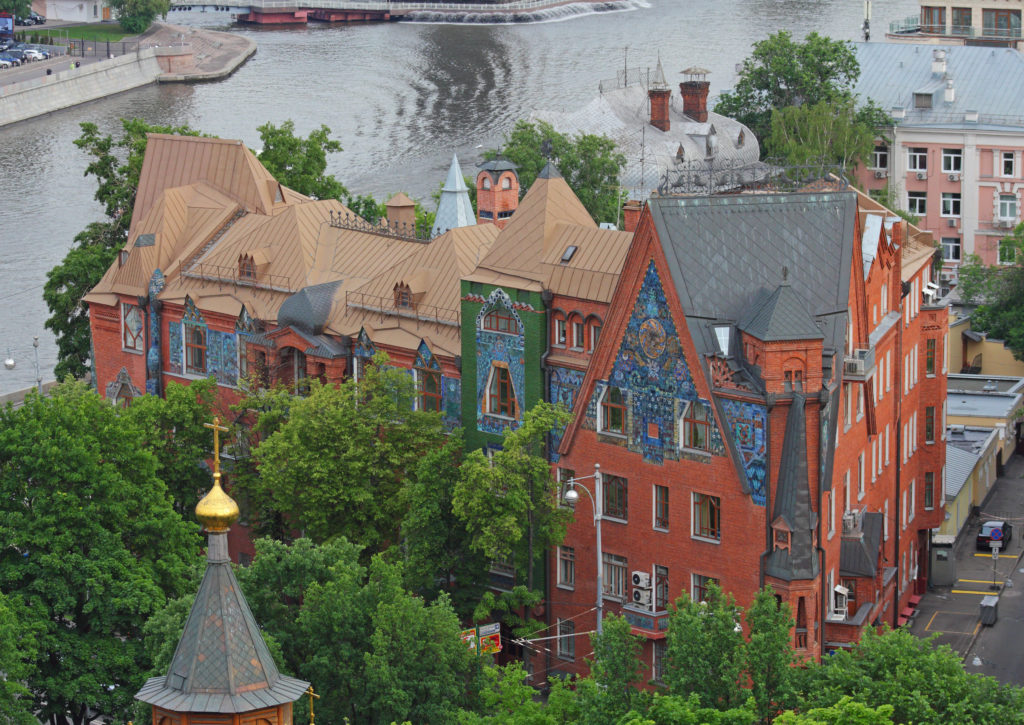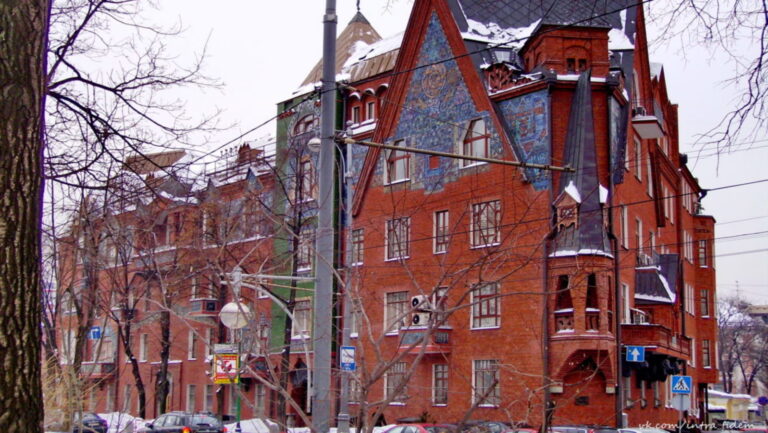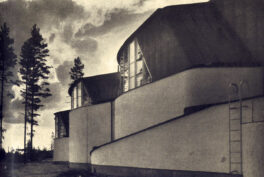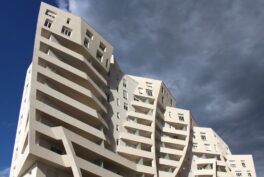This building from the art-nouveau era is a sight for sore eyes! Pertsov’s house is an interesting example of Russian classical folk influences combined with 20th century architecture.
Pertsov’s Apartment House is one of the most famous buildings in Moscow. The house is an embodiment of art-nouveau and neo-Russian style. From afar it seems extremely fabulous and complex. However, in fact it is very rational – a simple three-storey building that still exists on this site was even constructed within the body of the house. The Pertsov couple, Petr and his wife Zinaida built it primarily for themselves and in accordance with their tastes and needs. The owners lived in it and provided a part of the premises to their friends and various art-workers at a discounted rate or sometimes completely free of charge.

How did the fairytale come to be?
The house was built in 1907. The owner, a railway engineer Petr Pertsov, made the decision to build it after seeing the mansion of the Russian philanthropist and collector Ivan Tsvetkov. After that, Ivan chose the location for the construction of the house and made Pertsov promise that he would built it in typically Russian style. With this instruction in mind, Pertsov held a competition to find the best draft of a plan for the building. The main condition was: the project should have all the spirit and tradition of Moscow as well as every modern comfort available.

Many famous artists of the art-nouveau scene made up the jury: Viktor Vasnetsov, Vasily Polenov, Fedor Schechtel and many others. Apollinary Vasnetsov won first prize. However, Pertsov himself preferred the project of Sergey Malyutin. Also, a unique entry appeared: a civil engineer Nikolay Zhukov wanted to build the house without the input of an architect at all.
And what is so magical about it?
Color is the main characteristic that stands out and helps to create a picturesque impression. The master makes full use of the possibilities of red brickwork with its rich and warm saturated color, as if turning the wall into the heavy fabric of a theater curtain or a Persian carpet. Pertsov wanted to see a fantastic, memorable house, and the artist Malyutin at that time was famous for illustrations of fairytales. Therefore, the House is a synthesis of the ideas of these two strong characters.

Maybe the carriages in front of it would look better than the cars!
The facades of Pertsov’s house are a set of symbols and ornaments. The panels include images of the sun, a bear fighting with a bull, giant fantastic flowers and luxuriant birds. Some of the drawings almost literally replicate the drawings of Finnish artist Akseli Gallen. These majolica panels fulfill the decorative task of making the house look fabulous. They evoke associations with Russian folk culture although there are no specific stories. To sum up, the panels are a vivid example of the embodiment of the mythological motifs of northern folklore in Russian monumental art of the early 20th century.
Petrsov’s House looks utterly innovative, even to this day. This mansion stands out because the monumental decoration in it is all-façade. Ceramics adorn not only the front of the building but also extend all around the house. As well as this, Malyutin’s panels are unusually bright for an art-nouveau building.

Since the mid-1970s, the Russian Ministry of Foreign Affairs has ownership of Petrsov’s house. Unfortunately, even if it was possible to go inside, none of the original interiors have been preserved. Nevertheless, Pertsov’s house allows one to escape into an atmosphere of fairytales while taking a stroll in the center of Moscow.
Seeking more magic?
In this article you can see how fairytales look in Russian artist Wassily Kandinsky’s paintings!







